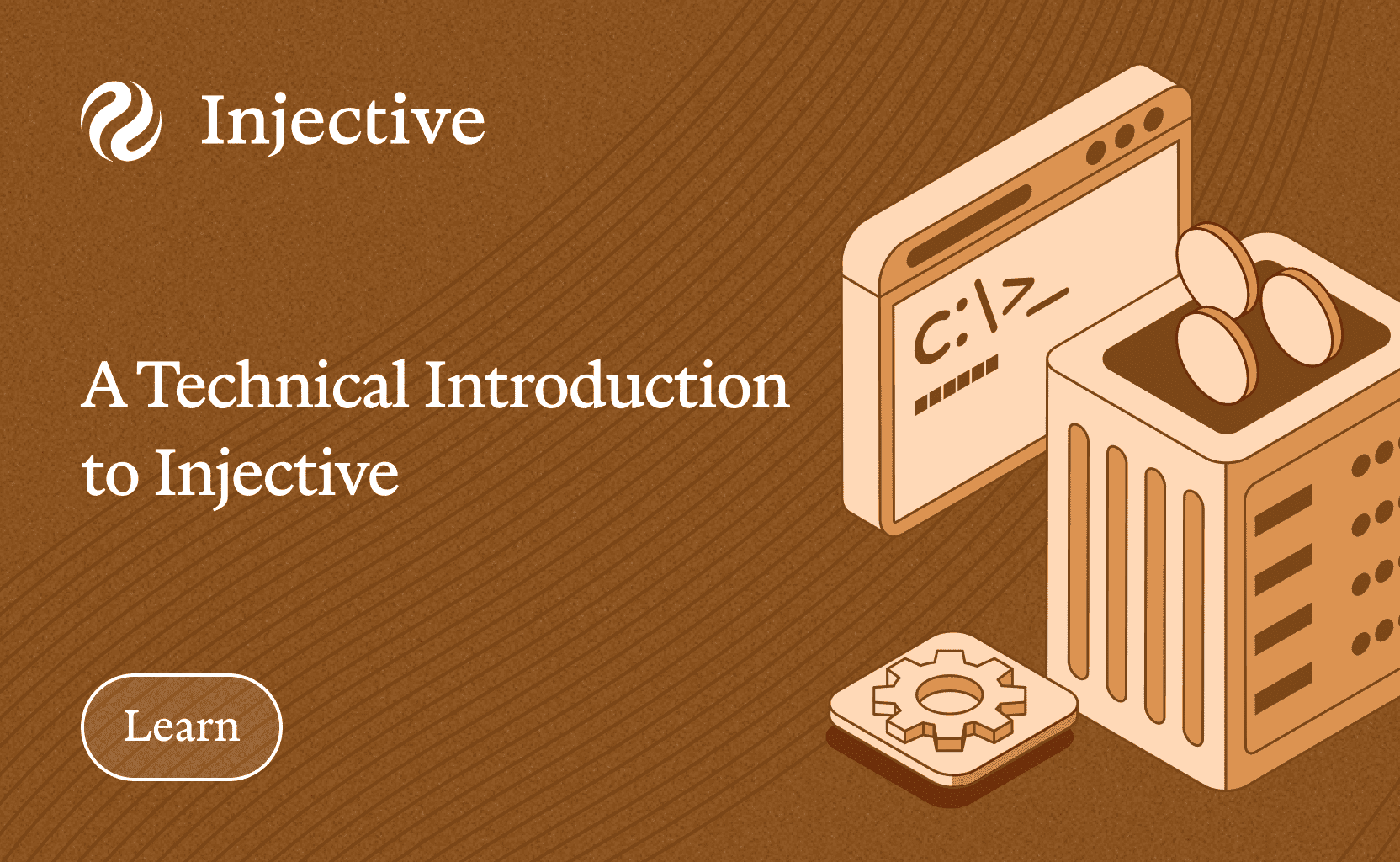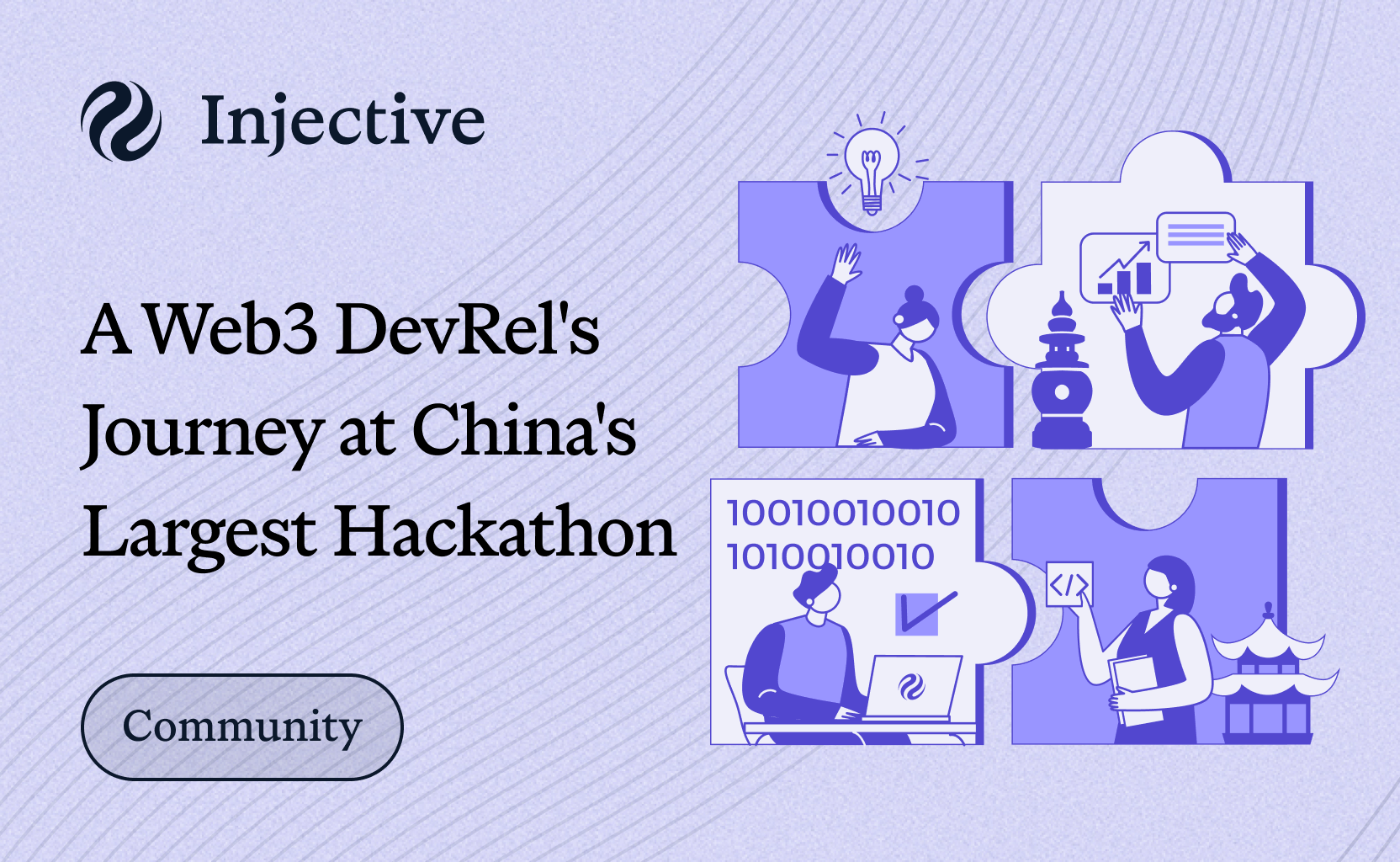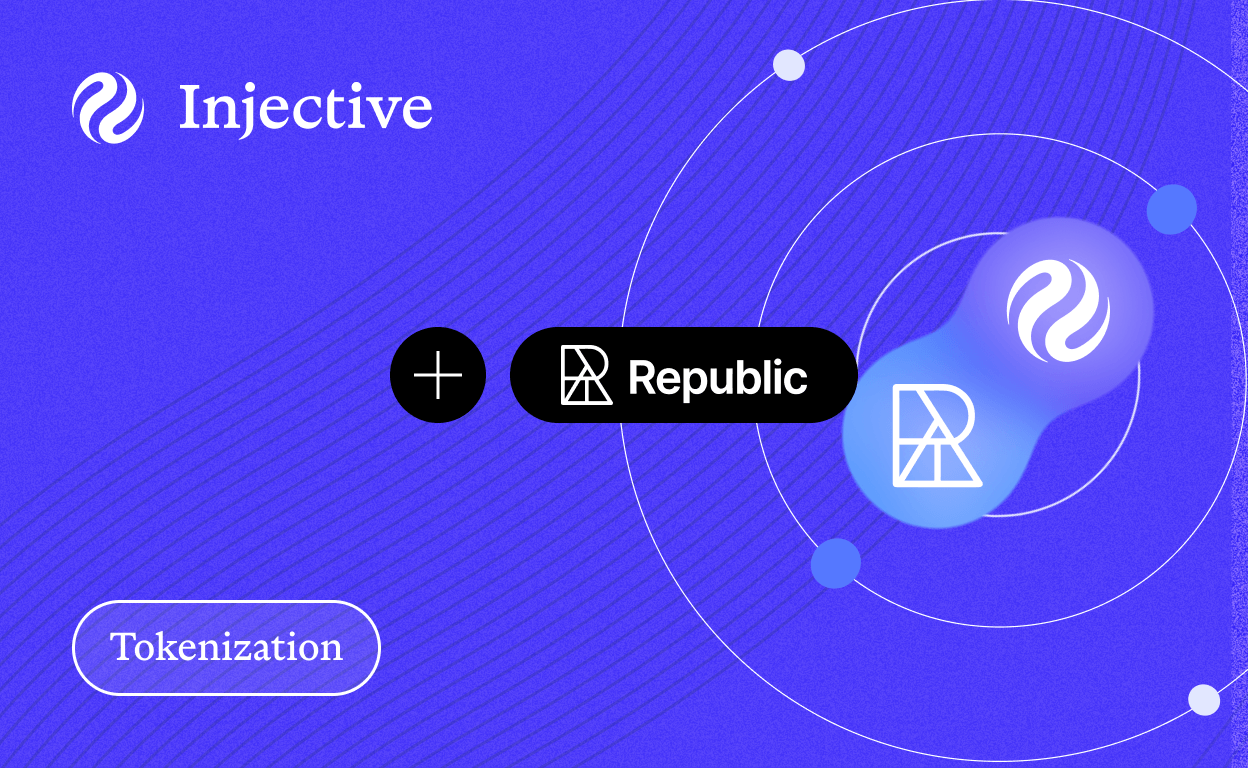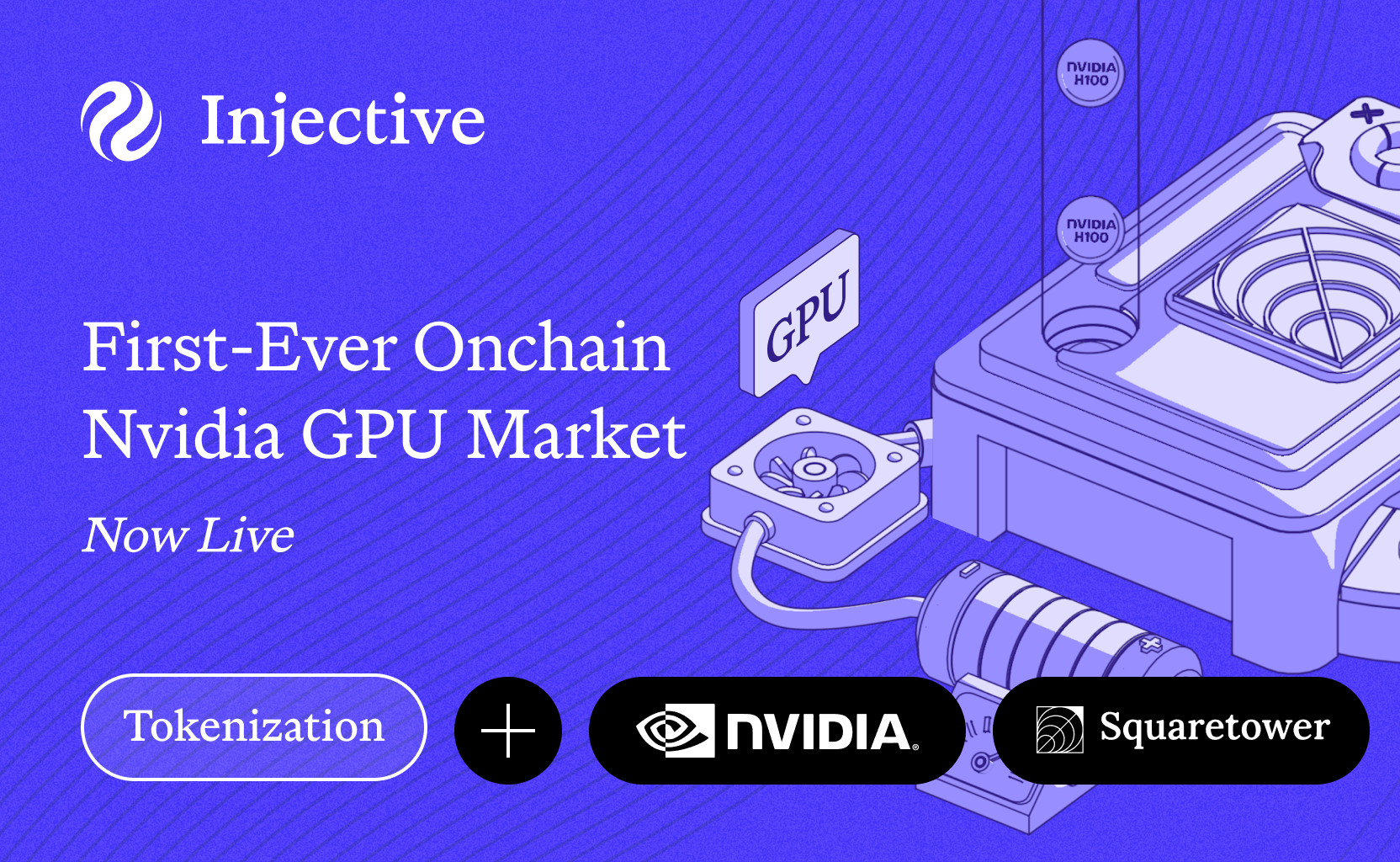It has never been easier to onboard onto Injective. Whether you are a backend or frontend developer, a smart contract engineer, or a node operator, Injective offers an unparalleled experience for all. This guide provides an introduction to building on Injective, along with links and references to where you can do a deeper dive into the topics that interest you most.
Injective uniquely provides a set of powerful Web3 finance modules that greatly simplifies the development experience. This includes the on-chain orderbook module which any dApp can tap into for immediate institutional grade liquidity on chain. Developers can seamlessly plug-and-play modules together to rapidly iterate on new applications which is not possible on any other L1 that requires application development to occur from scratch.
The guide here provides an overview of development and highlights some of the modules such as the exchange module that can be utilized to create groundbreaking applications with unmatched liquidity from day one.
1. An Intro to Smart Contract Development and Installing injectived
Smart contracts on the Injective blockchain represent a next-generation, highly interoperable framework.
Injective's WebAssembly (WASM) smart contract layer provides a vast range of financial primitives, such as shared on-chain liquidity, oracle price feeds, cross-chain bridging, and unique execution capabilities, enabling the development of sophisticated decentralized applications (dApps).
A unique feature of Injective is its support for self-executing smart contracts, a novel primitive that expands application design possibilities and allows for the creation of fully decentralized, permissionless applications. Injective is also designed to facilitate blockchain interoperability, enabling seamless integration and cross-chain communication, thereby opening up new possibilities for innovative products and services that leverage the advantages of multiple blockchain networks simultaneously. Injective's commitment to blockchain interoperability, along with its sophisticated smart contract platform and financial infrastructure primitives, positions it as a leading force in the development of a more open, equitable, and decentralized financial system.
To get started developing Wasm native smart contracts, injectived must first be installed. injectived is the command-line interface (CLI) and daemon that connects to Injective, allowing developers to interact with it. It is essential for node/validator operations, programmatic account creation, funding accounts, and smart contracts launches on Injective. The documentation provides instructions for installing injectived using a Docker image, which simplifies the setup process for developers. However, if you prefer not to use Docker, you can install injectived from the binary and follow the provided installation instructions. The documentation also includes tips for using injectived with both the Injective mainnet and testnet via specifying the correct --node flag for each.
The linked documentation above also covers the basics of creating and interacting with smart contracts on Injective, including the structure of a basic smart contract and how to deploy it via injectived. It provides examples of Wasm based smart contracts, including a counter contract that increases and resets a counter to a given value. Other great resources for learning CosmWasm development include, CosmWasm Academy and Area-52, two great online and free courses.
2. Frontend Development and Getting Started with the Injective TypeScript SDK
Frontend development on Injective involves creating user interfaces that interact with the blockchain, allowing users to perform various actions such as managing assets, creating permissionless markets on Injective dApps, querying data from the blockchain, and more. The Injective TypeScript SDK (injective-ts module) provides a set of tools and libraries that simplify the process of building these interfaces. The best resource for getting started with the Injective TypeScript SDK is the documentation. Here you will find everything you need to successfully develop your first dApp on Injective.
Two links to highlight are the injective-ts-examples GitHub repo to view basic examples, such as how to send a transaction and query data on Injective. And the second, “Building dApps” section, to learn how to build a an application such as a DEX from scratch, as well as creating a smart contract and interacting with it via the injective-ts module.
3. API Trading and Getting Started with the Injective Python SDK
API trading across dApps built on Injective involves programmatically executing trades, managing orders, and accessing market data through the Injective API. The Injective Python SDK provides a convenient way to interact with the Injective API, allowing developers to build trading bots, automate trading strategies, and integrate Injective's capabilities into their applications.
Injective's architecture is designed to facilitate the creation and trading of arbitrary spot and derivative markets, incorporating on-chain limit orderbook management, trade execution, order matching, and transaction settlement via the Injective exchange module. This comprehensive approach ensures a seamless trading experience, from order placement to settlement, all managed on-chain.
Two primary services are central to the trading process:
The Chain API: Primarily designed for write operations, the Chain API directly queries the blockchain state from the node, providing immediate and direct access to the current state of the blockchain. This includes a limited set of API requests for reading data, focusing on the immediate and current state of the blockchain.
The Indexer API: Exclusively for read-only operations, the Indexer API reconstructs the blockchain state from events emitted by the chain, offering a comprehensive view of the network's state without direct access to the blockchain. Offers additional functionalities such as a broader range of methods, streaming support, gRPC integration, and the ability to fetch historical data, making it a more versatile tool for data retrieval compared to the Chain API.
The trading lifecycle begins with traders signing transactions containing order messages. These transactions are then broadcasted to an Injective node, where they are added to the mempool and eventually included in a block. During the block processing period, the handler for each message type is executed. Immediate processing is applied to order cancellation and liquidation messages, while order creation messages are queued for later processing.
At the end of the block, the batch auction process for order matching begins. Market orders are executed against the resting orderbook, and limit orders are matched against one another and the resting orderbook, resulting in an uncrossed orderbook. The chain then settles funds accordingly, creating positions for derivative trades and swapping assets for spot trades. Events containing trade and settlement information are emitted by the chain, which are then indexed by the Injective Exchange API backend and pushed to all subscribed traders.
The complete SDK documentation, with additional guides and examples, can be found here.
4. Introduction to Running a Node on Injective
Running a node on Injective is a critical step for developers and validators looking to participate in the network's operation. There are multiple ways to interact with an Injective node, including through the Command Line Interface (CLI) along with gRPC and REST endpoints. Each method offers unique advantages, depending on your specific needs and technical stack.
Option 1: CLI
The injectived CLI is a powerful tool for interacting with a node. Ensure your node is running in the terminal before using the CLI.
Option 2: gRPC
gRPC is a high-performance, open-source universal RPC framework that allows for efficient communication between services. The Protobuf ecosystem provides tools for generating client code from *.proto files, facilitating easy integration with various programming languages.
- grpcurl: A command-line tool for interacting with gRPC services, similar to curl but for gRPC. It's useful for debugging and testing.
- Programmatically: You can also interact with the node programmatically using Go, Python, or TypeScript. This involves creating a gRPC connection and using the generated client code to query the gRPC server.
Option 3: REST
All gRPC services are accessible via REST-based queries through gRPC-gateway, offering a convenient alternative for those not using gRPC. The URL paths are based on the Protobuf service method's full-qualified name, with some customizations for idiomatic URLs.
4. Developer Resources
As you begin your developer journey, feel free to refer back to this list for a comprehensive list of resources for developing on Injective.
Happy building ninjas!

About Injective
Injective is a lightning fast interoperable layer one blockchain optimized for building the premier Web3 finance applications. Injective provides developers with powerful plug-and-play modules for creating unmatched dApps. INJ is the native asset that powers Injective and its rapidly growing ecosystem. Injective is incubated by Binance and is backed by prominent investors such as Jump Crypto, Pantera and Mark Cuban.
Website | Telegram | Discord | Blog | Twitter | Youtube | Facebook | LinkedIn | Reddit | Instagram | Orbit Newsletter



